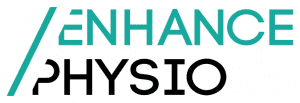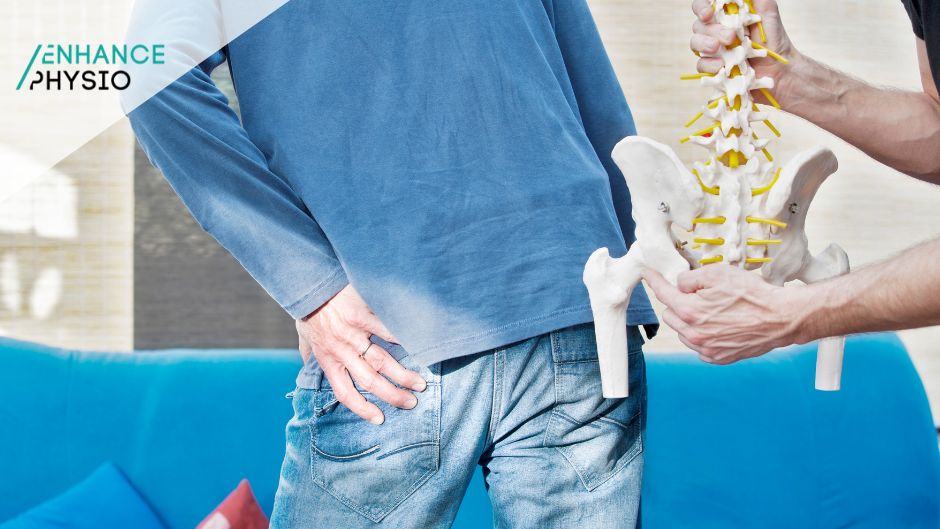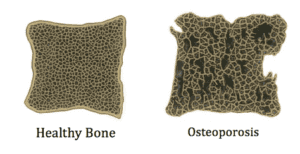Do you experience pain in your inner thigh? If so, it could be caused by adductor tendinopathy.
If you’re living with adductor tendinopathy, it can feel like you’re limited in what activities you can do and that your pain may never go away.
Don’t worry – this condition is treatable! You should know that physio is an effective way to manage the symptoms associated with adductor tendinopathy and get back to enjoying life without pain again.
What is adductor tendinopathy?
Adductor tendinopathy is a condition affecting the adductor tendon, typically following a pattern of pain and stiffness in the groin and inner thigh.
The adductor muscles are a group of five muscles located inside the thigh that act to move the hip inwards or control hip movements outwards. Additionally, they provide stability to the pelvis while standing, walking and running, hence why they are so important for everyday life.
The adductors consist of 5 muscles, which can be divided into the long and short adductors: the long adductors (Gracilis and Adductor Magnus) attach at the pelvis extending to the knee, and the short adductors (Pectineus, Adductor Brevis and Longus) also attach at the pelvis and extend to the thigh bone.

What causes adductor tendinopathy?
This injury usually occurs due to chronic overuse or a sudden increase in training load. The adductors are active in many sports, such as running, football, horse riding, gymnastics and swimming, making them a common injury for many individuals.
The repetitive nature of the movements in some of these sports and the constant change of direction heavily stresses the adductor tendon. Overstretching of the tendon or increased training intensity can often start the development of adductor tendinopathy. Increased forces over an extended period cause the tendon tissues to become painful.
Common symptoms of adductor tendinopathy
The typical symptom you will experience is pain in the groin region with movements of the adductor muscles. There may be a feeling of stiffness, weakness, swelling and pain when pressing over the adductor tendon or an inability to contract or stretch the adductors.
Pain can develop gradually or appear as an acute, sharp pain.
In severe cases, those suffering from adductor tendinopathy may also experience adductor muscle pain while walking.
People with adductor tendinopathy may experience pain when contracting or stretching their adductor muscles, such as squeezing their legs together against resistance.
Running (particularly sprinting), kicking, hopping, a deep split or lateral lunges will almost certainly be painful.
Getting in and out of the car, putting on pants, coughing and sneezing may all cause pain.

Common risk factors for adductor tendinopathy
Adductor tendinopathy is more common in active and sporting populations, particularly in sports requiring a constant and rapid change of direction and kicking, such as ice hockey, soccer, and Australian Rules Football.
People who have had a previous groin injury, have weak adductors (inner thigh) muscles, play a higher level of field sports, or have low levels of sports-specific training are more likely to sustain an adductor injury in sports.
Poor movement patterns during exercise can also stress the adductor tendons in the non-sporting population. Additionally, obesity, age-related weakness, degeneration or genetic factors may play a role.
Physiotherapy treatment for adductor tendinopathy
An accurate diagnosis by a physiotherapist is essential to ensure other conditions are ruled out and the proper treatment is given to enable the best recovery.
Firstly, identifying factors that may have led to the condition’s onset may need to be avoided or modified in the initial stages of treatment to allow relative rest from aggravating factors.
Your physiotherapist will develop a specific tendon loading program based on the individual and their particular needs to assist with the patient’s rehabilitation.
Physiotherapy treatment may include:
- Creating and implementing a return to sport or activity plan
- Advice on activity modification
- Specific Tendon loading program
- Progressive strength, flexibility, core stability, pelvic stability, and balance exercises
- Biomechanical rectification
- Technique improvement
- Soft tissue massage or Dry Needling (particularly to the adductors and abductors)
- The application of strapping to assist with activity requirements

Final thoughts on physiotherapy for adductor tendinopathy
Physiotherapists have a crucial role in managing patients with adductor tendinopathy, including assessment, treatment planning, and monitoring progress.
Physiotherapy can help you find much-needed relief and regain strength and mobility in the affected area.
Physiotherapy is essential for patients with adductor tendinopathy to achieve the best possible outcome, and decrease the risk of future recurrence.





